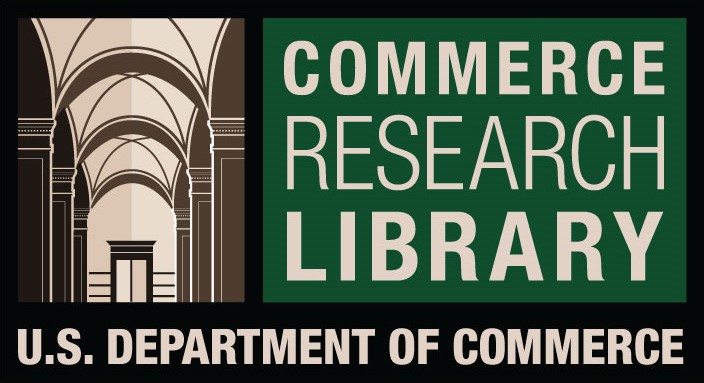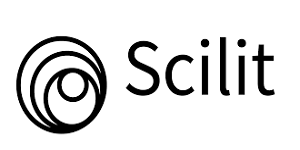Evaluation of the Relationship between Health Education and Health Development Curriculum of the First High School with Professional Qualification of Teachers and Based on Health System Indicators
DOI:
https://doi.org/10.61841/ac8djm69Keywords:
design, curriculum model, health education, health development, junior high schoolAbstract
Health education and health promotion is accepted as an individual and social value and an
undeniable necessity in every society. According to the statutes of the World Health Organization, all educational
and health organizations are obliged to strive to spread it. This important point has been mentioned and in order
to implement it, by compiling health and health promotion courses in different educational courses, especially
junior high school, efforts have been made to give the necessary training to students and to take necessary
measures to achieve a healthy, dynamic and lively society. The purpose of this study was to design a model of
health education and health development curriculum for junior high school based on the indicators of the health
system and the document of fundamental change in education. The research method was descriptive correlation,
field data collection method and interview data collection tool and questionnaire. The statistical population in
this study was all professors and curriculum specialists. Purposeful sampling method was used to select a sample
from among the specialists and 15 people were selected as a statistical sample considering the saturation law.
The researcher faced data saturation after the twelfth interview, but to ensure the adequacy of the data, the
interview process continued until the fifteenth person. Therefore, the statistical sample in this section is 15
people.
Based on the research results, it can be said that the four main themes of "purpose", "content", "teaching method", and "evaluation" as dimensions of health education and health development curriculum in junior high school based on the indicators of the health system with emphasis on The components of the document of fundamental change in education were identified. The results also showed that the variables of purpose, content, teaching method, and evaluation in explaining the model of health education and health development curriculum of the first year of high school based on health system indicators with emphasis on components. The document is a fundamental transformation of effective education. So that the target variable was in the first priority, the
content variable was in the second priority, the teaching method variable was in the third priority and the evaluation variable was in the final priority
Downloads
References
[1] Aba Anane, C. (2013). Competency Based Training Quality Delivery for Technical and Vocational Education
and Training (TVET) Institution. Educational Research International, 2(2), 117-127.
[2] Adetoro Adenrele Rasheed. (2015) “Effects of lrarning Together , constructive controversy in students
Acquisition of knowledge and skills in pace Education Aspect of social studies “ European, Reaserch, vol
(93), Is. 4.
[3] Altbach, P. G. (1995). Texbook ,In the International Encyclopedia of Education. vol, Editors-in-chif
Torstohusent ,T. Neville postlethwaite.
[4] Ash. R.L. & Persall. M. (2003). The principal as chief learning officer: developing teacher leaders, NASSP
Bulletin, May, 15–22.
[5] Asuto, T. A; Clark, D. L; Read, A. M; McGree, K. & deKoven Pelton Fernancez, L. (1994). Roots of reform:
Challenging the assumptions that control change in education. Bloomington, IN: Phi Delta Kappa
Educational Foundation.
[6] Baggot Rob , Public Health Policy and Politics. Mac Millan press Ltd , 2000. PP. 99-100.
[7] Bakker, A. B. (2011). The evidencebased model of work engagement. Current Directions in Psychological
Science, 265-269.
[8] Barth, R. (1999). Improving schools from within. San Francisco: Jossey-Bass.
[9] Bjekic, D. Krneta, R. & Milosevic, D. (2010). Teacher Education from Elearner To E-Teacher: Master
Curriculum. Journal of Educational Technology, 9, p202-212.
[10] Blase. J. & Anderson, G. L. (1995). The Micro politics of Educational Leadership: from control to
empowerment. London: Cassell
[11] Boles, K. C. (1992). School Restructuring by Teachers: A Study of the Teaching Project at the Edward
Devotion School. Paper presented at the Annual Meeting of the American educational Research Association,
San Francisco, CA, April 1992.
[12] Boles. K. C. & Troen, K. (1994). School restructuring by teachers: a study of the teaching project at the
Edward Devotion School, paper presented at the Annual Meeting of the American Educational Research
Association, San Francisco, April 1992.
[13] Boyatzis, R. E. (2008). Competencies in the 21st century. Journal of Management
[14] Burton N, Middlewood D. Managing the Curriculum. 7 ed. California: Sage Publications Ltd; 2001.
[15] Celikkaya, Tekin, Filoglu, Simge. (2014). Attitudes of Studies Teachers toward Value and Values Education.
Educational Sciences: Theory & Practice. |4|4|. 1551-1556.
[16] Childs-Bowen, D. Moller, G. & Scrivner,J. (2000). „Principals:Leaders of Leaders‟ NASSp Bulletin 84, no
616, 27-34.
[17] Convertino, Christino. (2016). “Beyond Ethnic Tidbits:Toward a critical and dialogical Model in
Multicultural Social Justice Teacher “ prepration international of Multicultural Education vol. 18. No. 2.
[18] Cosmin, A. D. (2013). Designing A Competency-Based Curriculum For Pedagogy Subjects at High School
Level ,Doctoral Thesis Summary, University of CLUJ-NAPOCA.
[19] Day, C. & Harris, A. (2003). Teacher leadership, reflective practice and school improvement, in Leithwood K
& Hallinger P (eds) Second International Handbook of Educational Leadership and Administration,
Dordrecht: Kluwer Academic.
[20] Detels Roger, Holland Walter W., Mcewex Janes and Omex Gilberts.Oxford Textbook of Public Health .
Third Edition Volume 1 ,New York,Oxford University Press, 1997. PP. 35.Development. Vol 27 NO 1. pp. 5-
12.
[21] Eastwood, K. & Louis, K. (1992). Restructuring that lasts: managing the performance dip, Journal of School
Leadership, 2(2), 213–224.
[22] Eastwood, K. & Louis, K. (1992). Restructuring that lasts: managing the performance dip, Journal of School
Leadership, 2(2), 213–224.
[23] Ford, Kate. (2014). Competency-Based Education:History, Opportunities,and Challenges. Published by
UMUC Center for Innovation In Learning and Student Success (CILSS).
[24] Frost, D. & Durrant, J. (2003). Teacher Led Development Work: guidance and support, London: David
Fulton Press.
[25] Fullan, M. (1999). The meaning of educational change. New York: Teacher College Press. Fullan, M. (1993).
Change forces: Probing the depths of education reform. London: The Falmer Press.
[26] Gehrke, N. (1991). Developing Teacher Leadership Skills, ERIC Digest, ERIC: 5.
[27] Gronn, P. (2000). Distributed properties: a new architecture for leadership, Educational Management and
Administration, 28(3), 317–338.
[28] Gruban, B. (2003). Kompetence: moda, ki traja e štiri desetletja. Finance, 1596/168, str.. 1.
[29] Haddouchane, Z. A., Bakkali, S., Ajana, S., & Gassemi, K. (2017). The application of the competency-based
approach to assess the training and employment adequacy problem. International Journal of Education, 5(1),
1-18.
[30] Handler, B. (2010). Teacher as Curriculum Leader: A Consideration of the Appropriateness of that Role
Assignment to Classroom-Based Practitioners. International Journal of Teacher Leadership. Volume 3,
Number 3.p32-42. http://www.csupomona.edu/ijtl.
[31] Hargreaves, A. (2007). The long and short of educational change. Education Canada 47(3): 16–23.
[32] Harris, A. & Muijs, D. (2004) Teacher leadership: Principles and practice. General Teaching Council. See:
http://www.gtce.org.uk Kets de Vries, M.F.R. (1990) „The organizational fool: balancing a leader‟s hubris‟,
Human Relations, 43(8): 751–70.
[33] Harris, A. (2003). Teacher leadership: a new orthodoxy? in Davies, B. & West Burnham J. (eds) Handbook of
Leadership and Management, London: Pearson Publishing (in press).
[34] Hong, Jon-Chao & Jeou-Shyan Horng & Chan-Li Lin & Lih-Juan ChanLin. (2008). Competency disparity
between pre-service teacher education and in-service teaching requirements in Taiwan, International Journal
of Educational Development. Vol 28, No 1, PP 4–20.
[35] Hopkins, D. (2001). School Improvement for Real, London Falmer Press.
[36] Hopkins, D; West, M; and Ainscow, M. (1996). Improving the Quality of Education for All. London: David
Fulton Publishers.
[37] Huntly, Helen(2003) Teachers‟Work: Beginning Teachers‟Conceptions Of Competence, Thesis ,Central
Queensland University.
[38] Irian D. Demakova, R oza A. valeeva, Alina v. shipova. (2016). ”Socialization of adolesents: culture practice
in childrens sammer camp“ International of Enviromental & S-cience Education 11 (7).
[39] Jefferies S. A(2000), literature review exploring a meaning for the term'curriculum leadership'..
[40] Jekel James F.,Katz David L. Epidemiology, Biostatistics and Preventive Medicine .Second Edition, W.B.
Saunders Company, 2001. PP. 221-3.
[41] K. Park: Parks Textbook of Preventive and Social Medicine, 18th edition, M/s Banarsidas Bhanot Publishers,
India, 2005.
[42] Katzenmeyer, M. & Moller, G. (2001). Awakening the Sleeping Giant. Helping Teachers Develop as
Leaders, Thousand Oaks, CA: Corwin Press.
[43] Kerr Joanne, Community Health Promotion Changes for Practice. Bailliere Tindal, 2000. PP. 5-23.
[44] Koenen, A. K, Dochy, F. & Berghmans, I. (2015). A Phenomenographic analysis of the implementation of
competence-based education in higher education. Teaching and Teacher Education, 50,1-12.
[45] Kowalski, T. J. (1995). Preparing teachers to be leaders: Barriers in the workplace. In M. J. O'Hair and S. J.
Odell (Eds.), Educating teachers for leadership and change: Teacher education year book HI (pp. 243-256).
California: Corwin Press, Inc.
[46] Kutbiddinova. Rimma. A, Eromasova. Aleksander A, Romanova. Marina A. (2016). The Use of Methods in
the Educational Process of the Higher Education Institution, International Science Education, vol. 11, No.
14,6557-6572.
[47] Lambert, L. (1998). How to build leadership capacity. Educational Leadership, 55(7), 17–19.
[48] Last John M . Wallace Robert B . Maxy-Rosenau-Last Public Health & Preventive Medicine .13th Edition,
Prentice-Hall International Inc,1992. PP. : 687-98.
[49] LeBlanc, P. R. & Skelton, M. M. (1997). Teacher Leadership: The Needs of Teachers. Action in Teacher
Education, 19(3), 32-48.
[50] Leithwood, K. & Jantzi, D. (2000). Principal and teacher leadership effects: A replication. School Leadership
and Management, 20(4), 415-434.
[51] Lieberman, A; Saxl, E. R. & Miles, M. B. (1988/2001). Teacher leadership: Ideology and practice. In The
Jossey-Bass reader on educational leadership, (pp. 348-365). San Francisco: Jossey Bass.
[52] Little, J.W. (1995). Contested ground: the basis of teacher leadership in two restructuring high schools, The
Elementary School Journal, 96(1), 47–63.
[53] McCoach, D. B., & Colbert R. D. (2010). Factors Underlying The Collective Teacher Efficacy Scale and
Their Mediating Role in the Effect of Socioeconomic Status on Academic Achievemeny at the School Level.
Journal of measurement and Evaluation in Counseling and Development, 43(1), 31-47.
[54] Medly ,Donald M. and Harolde. Mizel (1982) “A teachnique for Measuring classroom Be havior”,Jj. Ed.
Psych, 49, 86-92.
[55] Moller, G. & Pankake, A. (2006). Lead with me: A principal‟s guide to teacher leadership. Larchmont, NY:
Eye on Education.
[56] Mulder, M. Editor. (2017). Competence-based Vocational and Professional Education. Bridging the Worlds
of Work and Education. Springer.
[57] Muijs, D. & Reynolds, D. (2001a). Being or Doing: The Role of Teacher Behaviors and Beliefs in School and
Teacher Effectiveness in Mathematics, a SEM analysis. Paper to be presented at the Annual Meeting of the
American Educational Research Association, Seattle April 2001.
[58] Muijs, D. & Reynolds, D. (2001b). Effective Teaching. Research and Practice. London: Paul Chapman
Publishing.
[59] Naido Jennie and Wills Jane , Health Studies an Introduction . First Edition Antony Rowe Ltd ,Chippenham
Wilts . 2001. PP. 47-9.
[60] Naidoo Jennie , wills Jane . Health Promotion Foundations for Practice. Second Edition, Harcourt Publishers
, 2000. PP. 5-64.
[61] Ogren, C. A. (2005). The American state normal school: “An instrument of great good.” New York: Palgrave
Macmillan.
[62] Ornstein, A. C. & Hunkins, F. P. (2004). Curriculum: Foundations, principals and issues (4th ed.). Boston:
Allyn & Bacon.
[63] Ovando, M. (1996). Effects of Teacher Leadership on Their Teaching Practices, paper presented at the
Annual Meeting of the University Council of Educational Administration, Philadelphia, PA.
[64] Pellicer, L. O. & Anderson, L. W. (1995). A Handbook for Teacher Leaders. Thousand Oaks, CA: Corwin
Press.Preedy M. Managing the Curriculum for Student Learning. 2002.
[65] Richardson A, Curtis A.D, Moss, G.P Pearson R.J, White S, Rutten F.J. Simulated drug discovery process to
conduct a synoptic assessment of pharmacy students. Am J Pharm Educ. 2014; 78 (2): 41.
DOI:10.5688/ajpe78241.
[66] Rubene, Z, Goba, L (2015). Health Literate Child: Transforming Teaching in School Health Education.
SOCIETY. INTEGRATION. EDUCATION, 1: 331-340. Available at
Journals.ru.lv/index.php/SIE/issue/download/23/1. Accessed June 10, 2016
[67] Quinn M.F.( 2000), “The principles and practice of Nurse Education” Chapman & Hall, London , 113,.
[68] Seif, AA. (2013). Modern educational Psychology :Psychology of learning and education. 7th ed,51th
pub,Tehran:Doran. [In Persian].
[69] Seraji, F, Attaran, M, Naderi, E, Aliasgari, M. (2007). Designing of virtual university curriculum. Journal of
Curriculum Studies, 2 (6), 79-118. [In Persian].
[70] Sergiovanni, T. (2001). Leadership: what‟s in it for schools? London: Routledge Falmer.
[71] Smith, Larry & Kling, Margaret Technical and Vocational Education and Training: Issues, Concerns and
Prospects, 2011, Volume 13, Part 4, 257- 243, DOI:4- 1539 - 007-94- 978/10.1007_1.
[72] Smylie, M. A. (1995). New Perspectives on Teacher Leadership. The Elementary School Journal, 96(1), 3-7.
[73] Taba, H. (1962). Curriculum development: Theory and practice. New York: Harcourt Brace.
[74] Taylor Robert B. Family medicine Principles and Practice . Fifth Edition ,New York ,Inc Springer-Verlag ,
1998. PP. 14-18.
[75] Taylor, F; Francis, R; (2010); critera for effective University teaching, Improving college and University
Teaching. Vol.28, No, 3.
[76] Teddlie, C. & Reynolds, D. (eds.) (2000). International Handbook of School Effectiveness Research. London:
Sage.
[77] Tekin Celikkaya, Simge filoglu. (2014). “Attitudes of Social Studies Teachers Toward Value and Values
Education Educational Science “ theory & practice. 14141. Educational consultancy. and research center
www. edam. com. tr/estp dol: 10 12738/estp. 2014. 4. 1605.
[78] Toole, JC. & Seashore Louis, KS. (2002). The Role of Professional Learning Communities in International
Education, education. umn. edu/ CAREI/ Papers/ JULYFINAL. pdf.
[79] Tourani, H., Aghazadeh, M. (2006). Prolem-based learning and how to apply in the primary school
classroom. Collection of Article in sixth annual conference of the curriculum Studies Association in Country
“Innovation in the Primary School Curriculum in Country”, University of shiraz, and Education Department
in Fars Province, March, P. 221-242. [In Persian].
[80] Tyler, R. W. (1949). Basic principles of curriculum and instruction. Chicago: University of Chicago Press.
[81] Vakani F, Jafri W, Ahmad A, Sonawalla A, Sheerani M (2014). Task-based learning versus problemoriented
lecture in neurology continuing medical education. J Coll Physicians Surg Pak, 24(1): 23-6.
[82] Valades. James R. (2015). ”Educating for Social Justice Drawing from Catholic Social Teaching”, Journal of
Catholic Education volum 19. Issue.
[83] Villegas_reimers.(2007) “teacher professional development” :an international review of the
literature.unesco;international institute for educational planning.
[84] Wagstaff, L. & Reyes, P. (1993).School-Based Site Management. Austin, TX, The University of Texas at
Austin.
[85] Wasley, P. A. (1991). Teachers Who Lead: the rhetoric of reform and the realities of practice, New York:
Teachers College Press.
[86] Wiggens,R.A. (1994). The Principal as Instructional leader: Inducement or Deterrent to teachers‟ Personal
Professional Growth? Paper Presented at the Annual Meeting of the Association for Supervision and
Curriculum Development, Chicago,II.
[87] zahoric,johna(1984). Teachingrules research beautyandcreation, journal of curriculumand supervision, vol2,
no.3, pp.572, 672,772,872
[88] Zeller, M. P, Serbino, J, Whitman, L, Skeate, R, & Amold, D. M. (2016). Design and Implementation of a
Competency-Based Transfusion Medicine Training Program in Canada. Transfusion medicine reviews. 30 (1)
,30-36.
Downloads
Published
Issue
Section
License
You are free to:
- Share — copy and redistribute the material in any medium or format for any purpose, even commercially.
- Adapt — remix, transform, and build upon the material for any purpose, even commercially.
- The licensor cannot revoke these freedoms as long as you follow the license terms.
Under the following terms:
- Attribution — You must give appropriate credit , provide a link to the license, and indicate if changes were made . You may do so in any reasonable manner, but not in any way that suggests the licensor endorses you or your use.
- No additional restrictions — You may not apply legal terms or technological measures that legally restrict others from doing anything the license permits.
Notices:
You do not have to comply with the license for elements of the material in the public domain or where your use is permitted by an applicable exception or limitation .
No warranties are given. The license may not give you all of the permissions necessary for your intended use. For example, other rights such as publicity, privacy, or moral rights may limit how you use the material.












